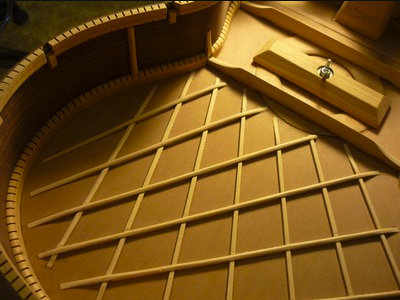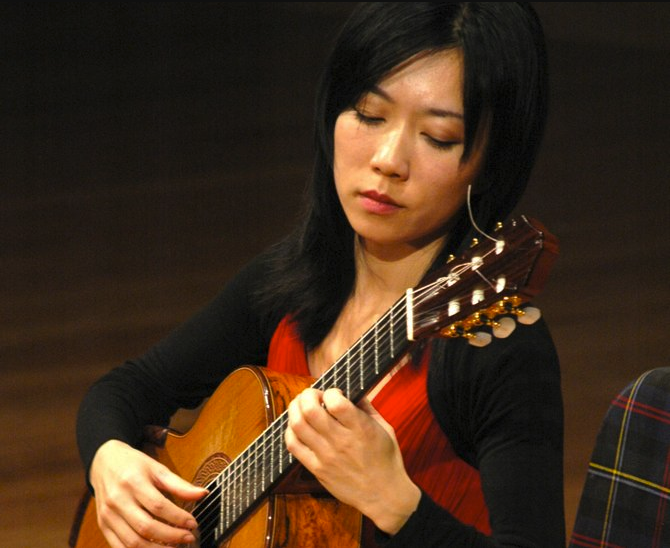Modern Classical Guitar Design Part 5: Lattice Bracing
Introduction
Up until a couple of decades ago most if not all classical guitars were constructed using the fan bracing method or variations thereof. Prior to that 'ladder bracing' was used in the smaller predecessors of the modern guitar. Once Antonio de Torres arrived on the scene the style of bracing for the soundboard changed with his radical new concept of braces splaying out in the shape of a fan. This style of bracing has been used successfully for almost two centuries and it is still probably the most common type of bracing used in classical guitar design today. However, in the 80s master Australian luthier Greg Smallman revolutionised the bracing system for the guitar soundboard by introducing a system known as 'lattice bracing'.
The glorious phenomenon with the guitar is that it is still evolving. It is a work in progress and it seems as though the rate of change and experimentation with its fundamental design is an ever-changing thing. There is probably no other instrument on earth that is made with such wildly varying designs, shapes, patterns, styles, sizes, materials and so on. Guitar luthiers seem like a wild bunch always pushing the boundaries of guitar style, design, and most importantly - sound.
What does a classical guitar fan brace look like?
In the picture below you can see a wonderful example of fan bracing used to support the top. The braces all 'fan' out towards the edges of the soundboard hence the term 'fan bracing'. There are several well-known variations to the basic Torres design:
- Amadeo
- Bouchet (pictured below)
- Cordoba
- Esteso
- Panormo
- Tatay
- Yacobi
These innovations do have an impact on the tones and frequencies that are projected and amplified by the guitar itself. The traditional 'ladder bracing' ran at a 90degree angle to the soundboard grain produce a thinner, treble biased sound somewhat similar to that of the lute. The Torres 'fan bracing' combined with a larger body and thinner top produced warm instruments with an enhanced bass response and projection.
Enter Greg Smallman - Bearded luthier extraordinaire with his revolutionary 'lattice bracing' innovation. Three decades ago Australian Greg Smallman irreversibly changed the design of classical guitar bracing by introducing a system of overlapping struts all joined together using a combination of carbon fibre and balsa wood in a 'lattice' framework joined to a top that is much thinner than tops using the conventional Torres bracing. The result is a guitar with extraordinary clarity, even and consistent frequency response & fuller tone.
Pros & Cons of a lattice-braced guitar
Pros:
- Loud. An increase in volume offers the guitarist more dynamic possibilities
- Sustain for days
Cons:
- Non-traditional tone (sometimes described as nasal)
- Too Lound (is there even such a thing?)
Famous players that play lattice braced guitars
- John Williams
- Xuefei Yang
- Carlos Bonnel
- Timothy Kain
- Stepan Rak
- David Tannenbaum
A wonderful example of the power of a lattice braced guitar can be heard in John Williams' documentary 'The Seville Concert'. John visits Greg Smallman at his home in NSW, Australia. During their meeting John plays a snippet of the third movement of the 'Concerto in D RV230' by Antonio Vivaldi after they've visited Smallman's workshop. The power and clarity displayed by that instrument during that wee snippet is undeniable.
In conclusion
At the end of the day the most important thing is how the guitar makes you feel. Choose a guitar that suits you not because it has some cutting-edge design features or because of its brand.
Check out my other articles in the
'Modern Classical Guitar Design Series':
Part 8: Fanned Frets
Part 7: Arched back
Part 6: Double Tops
Part 4: Armrest
Part 3: Soundport
Part 2: Indented Cutaway
Part 1: Elevated Fingerboard
Let your fingers fly!



